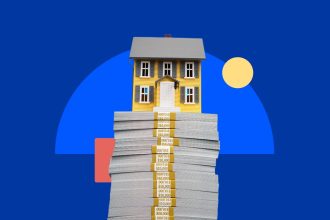Key takeaways
- The Community Reinvestment Act (CRA) is a federal and state law that encourages banks and lenders to meet credit needs — including mortgages — for low- and moderate-income communities.
- The CRA evolved in response to redlining and other discriminatory lending tactics.
- Banks implement CRA activities in a multitude of ways, from issuing a loan to a low- to moderate-income borrower to financing a mixed-use project. Your bank or lender can help you understand whether you’re eligible for a loan as a low- or moderate-income borrower.
The Federal Housing Administration (FHA) was created in 1934 to jump-start a struggling home construction industry and implement lending guidelines. Unfortunately, those guidelines included redlining and other discriminatory practices that largely prevented people of color from growing their wealth.
Some 40 years later, lawmakers came up with the Community Reinvestment Act, legislation aimed at evening the playing field and undoing the longstanding harm of redlining. This crucial legislation is one of several related to fair housing.
What is the Community Reinvestment Act?
The Community Reinvestment Act, or CRA, was enacted by Congress in 1977 to address redlining and encourage banks and thrifts to service borrowing needs in the communities where they operate, including low- and moderate-income neighborhoods. The legislation was updated in 2023 to more closely align with how banks operate today.
Before the CRA was enacted, few banks made loans to homebuying borrowers with low or moderate incomes. Many banks redlined certain parts of cities, refusing to lend to people and businesses in those areas. This left most inner cities without access to capital to build wealth and improve their neighborhoods.
What is redlining?
“Redlining” is a now-illegal practice in which banks and other lenders refused to loan mortgages in areas with certain income or racial demographics. Some lenders used a red pencil to denote those areas on a map.
Importantly, the CRA does not require banks to loan to borrowers who can’t reasonably afford to borrow credit; rather, it incentivizes banks to widen credit opportunities in low- and moderate-income areas. The law doesn’t impose lending quotas, either, such as originating a certain amount of loans in a specific area.
How the Community Reinvestment Act works
The CRA mainly applies to FDIC-insured institutions, classified as large, intermediate or small banks based on asset size; or as limited purpose banks. It also applies to banks within the Federal Reserve System and thrifts.
Under the CRA, federal regulators evaluate banks to assess whether they’re meeting the needs of low- and moderate-income borrowers by way of “community development activities.” Generally, these evaluations take place every three years — typically less often for small banks. That assessment is then taken into consideration when the bank applies for branch openings, mergers and acquisitions or charters.
The agencies who oversee CRA evaluations are the:
- Board of Governors of the Federal Reserve System
- Federal Deposit Insurance Corporation (FDIC)
- Office of the Comptroller of the Currency (OCC)
How CRA ratings work
The Federal Reserve, FDIC and OCC examine banks, then produce a written performance evaluation and 1 to 4 CRA rating, either:
- Outstanding
- Satisfactory
- Needs to improve
- Substantial noncompliance
How does the CRA apply to me?
The CRA is designed to help low- to moderate-income communities, defined as:
- Low-income: Median household income is less than 50 percent of the area median income (AMI) of the metro area the community is located in, or the state AMI if not in a metro area
- Moderate-income: Median household income is at least 50 percent but less than 80 percent of the AMI of the metro area the community is located in, or the state AMI if not in a metro area
AMIs are established by Census reporting.
Banks carry out CRA activities in a variety of ways. It could be as simple as loaning a mortgage or another type of loan to a low- or moderate-income individual, or as broad as providing financing to a developer to build more affordable housing or a mixed-use property.
Bottom line
If you’re looking to buy a home or invest in property, you might indirectly benefit from the Community Reinvestment Act. Talk to your mortgage loan officer to determine whether you qualify as a low- or moderate-income borrower and what loan types you might be eligible for.
Read the full article here
















